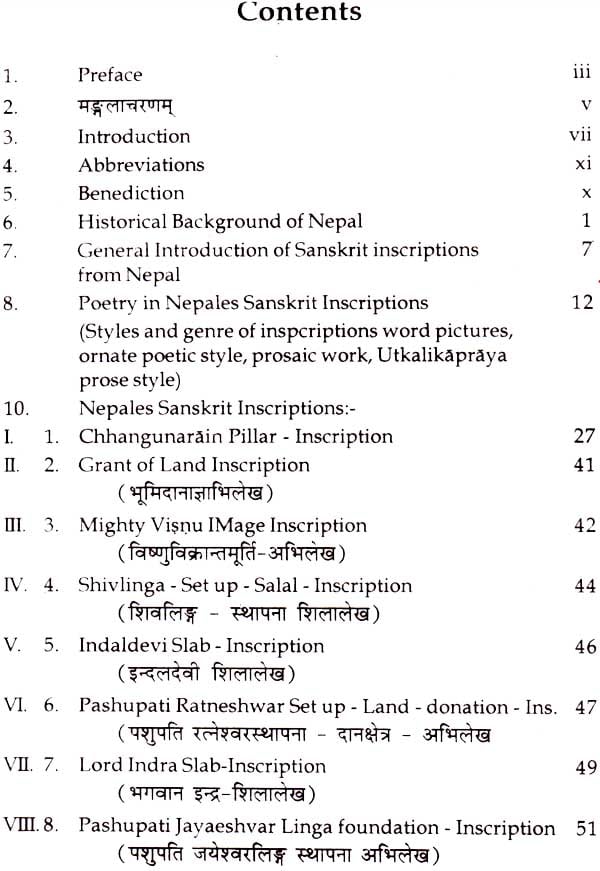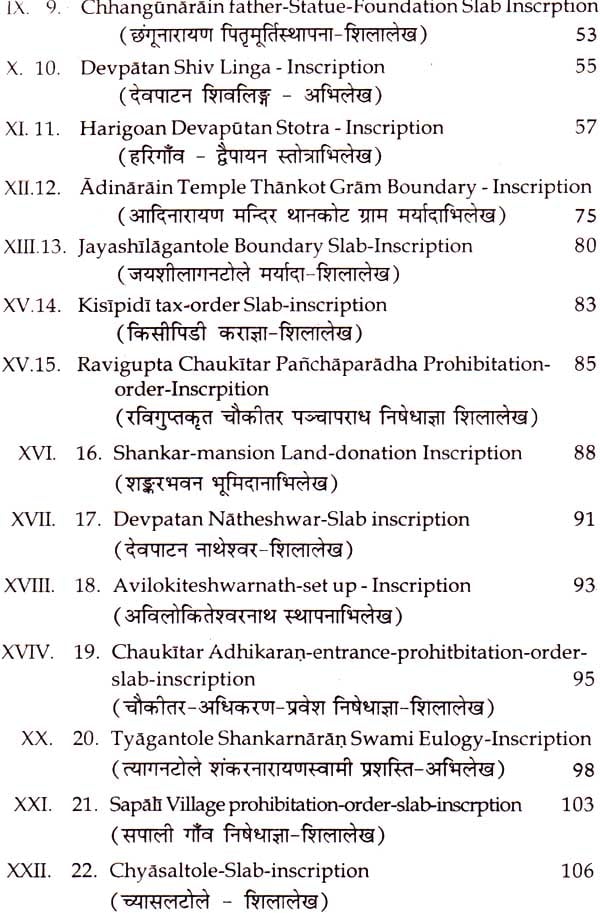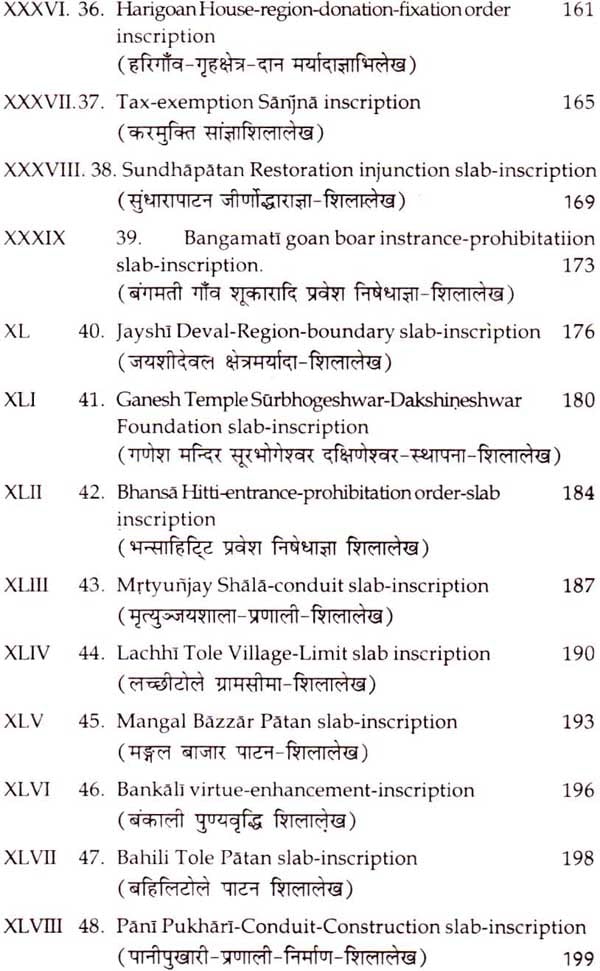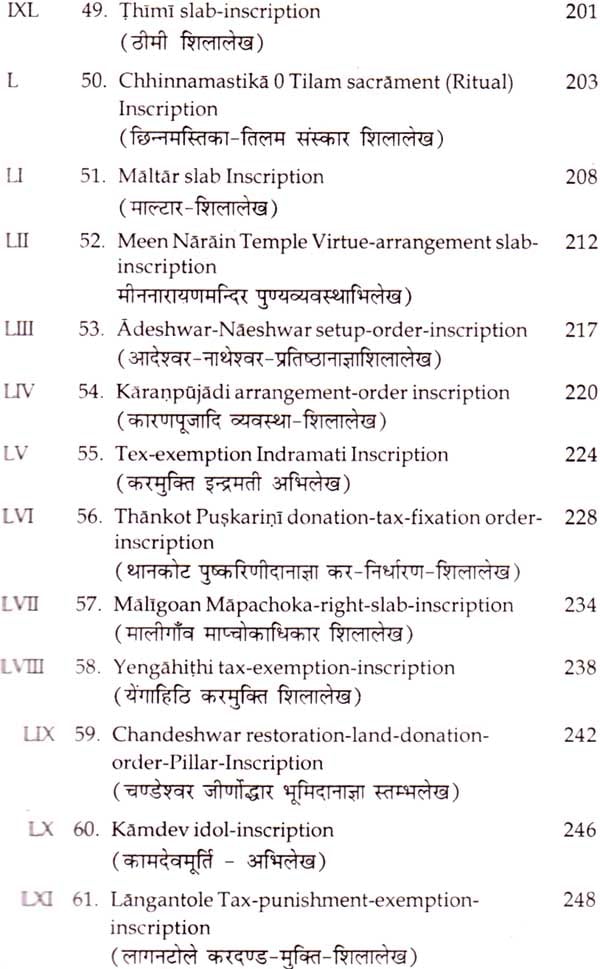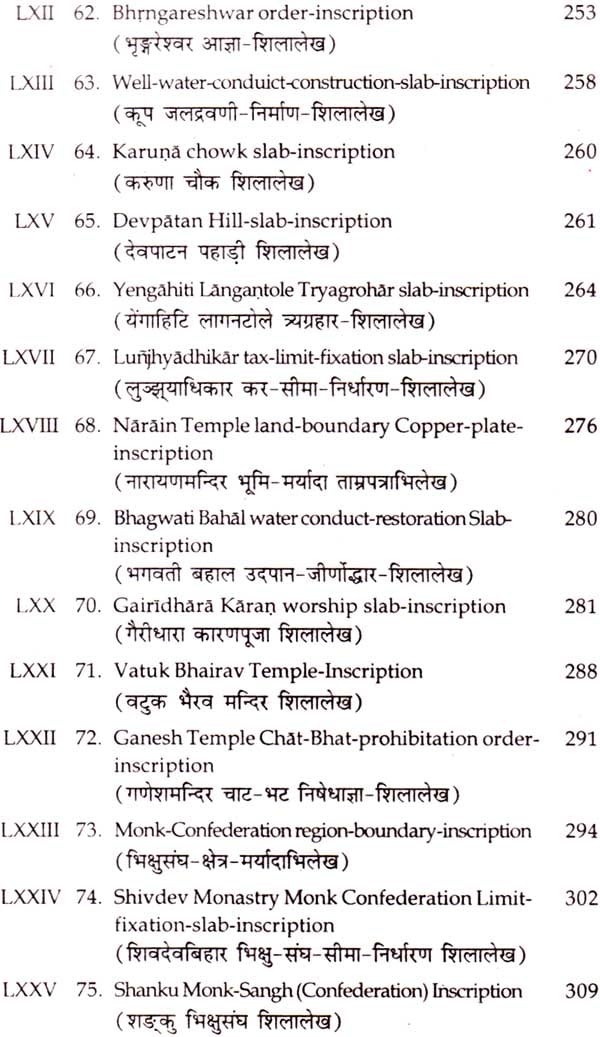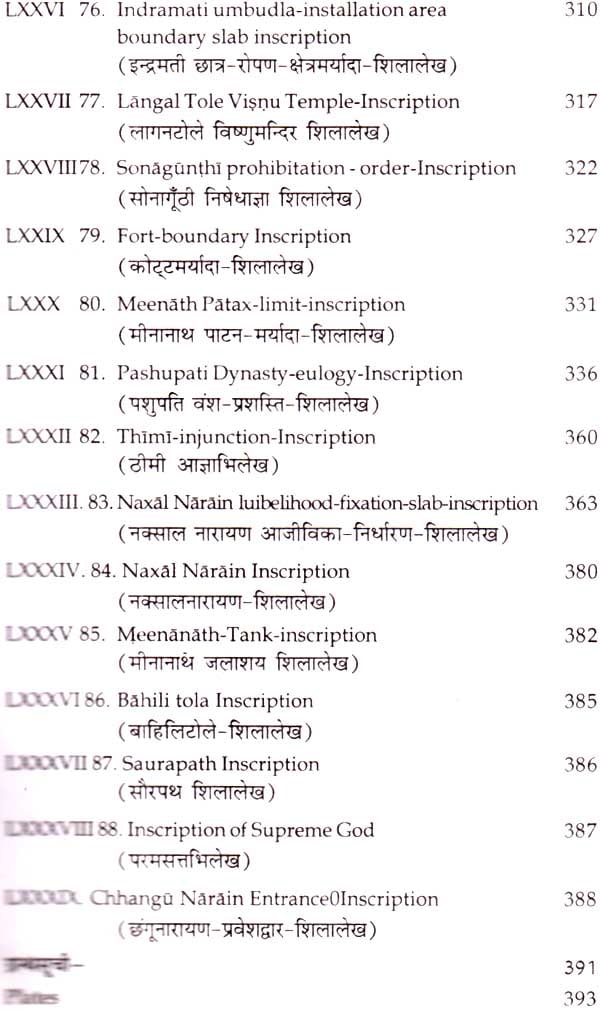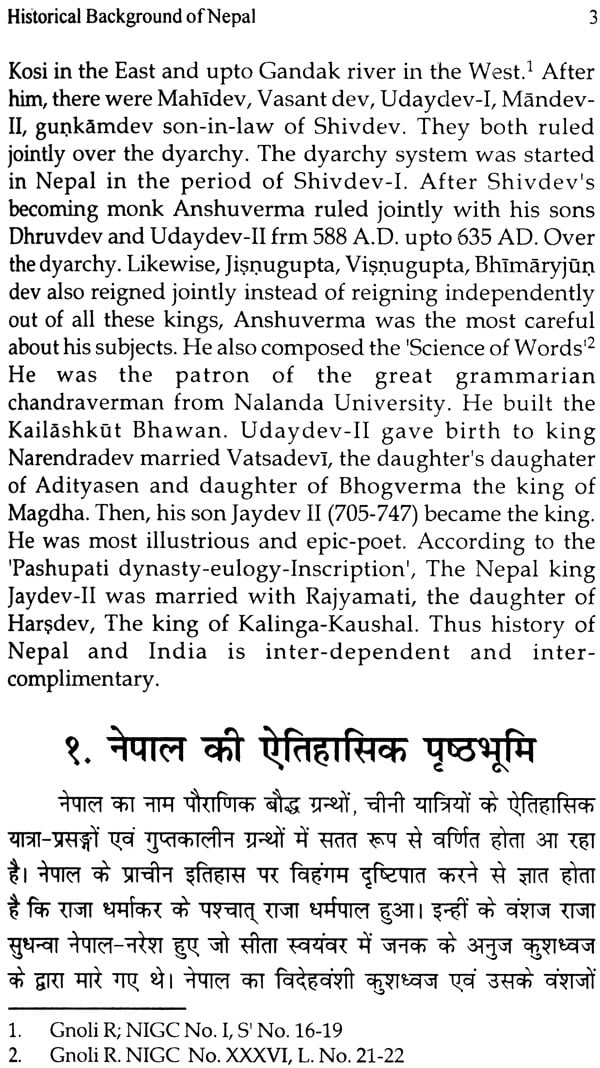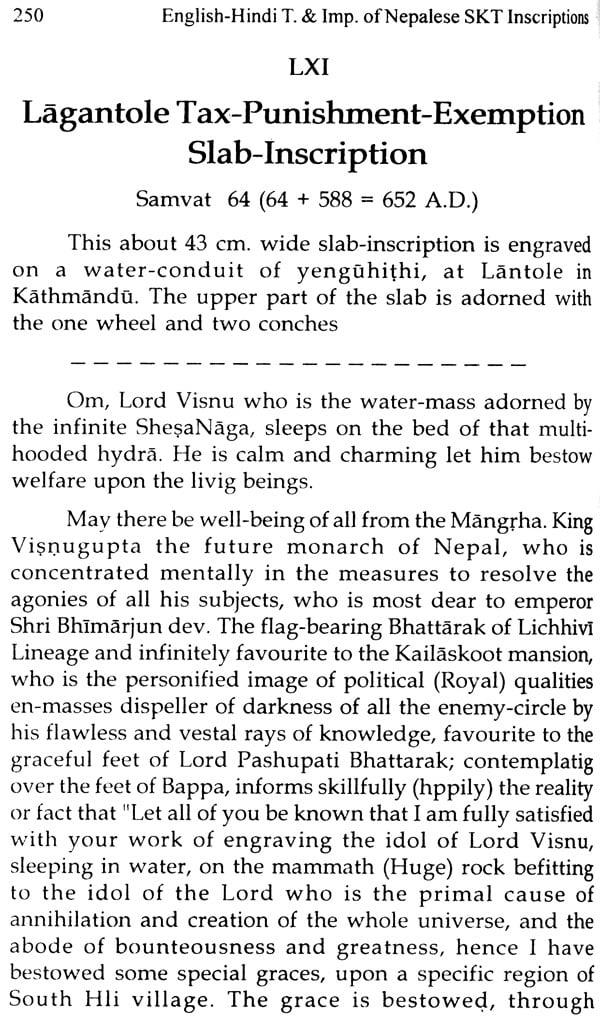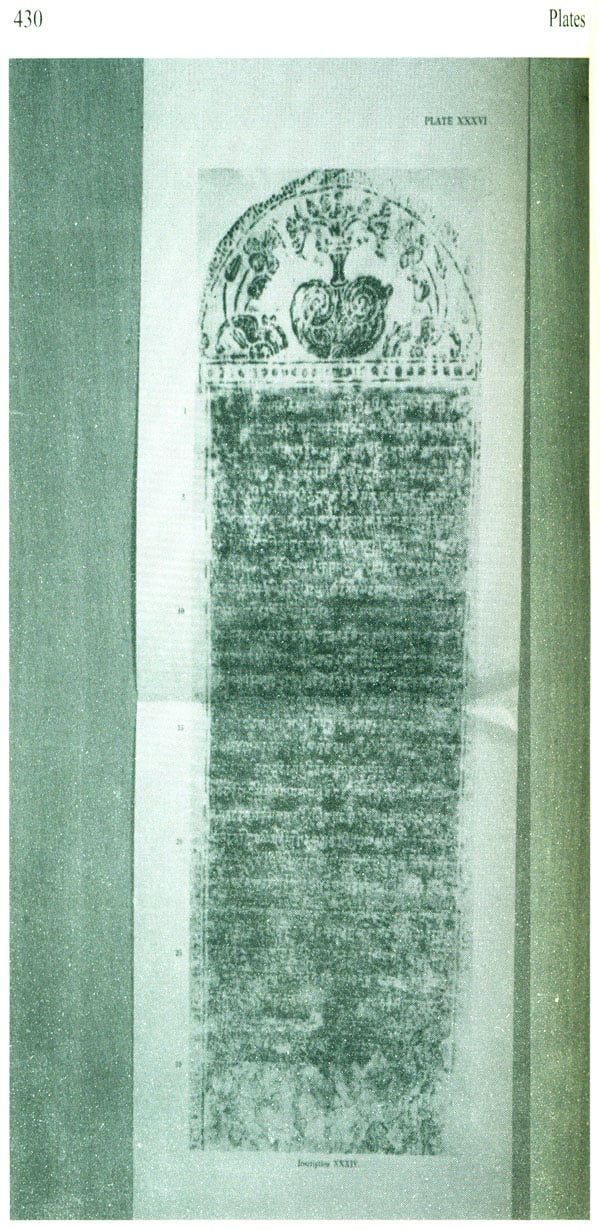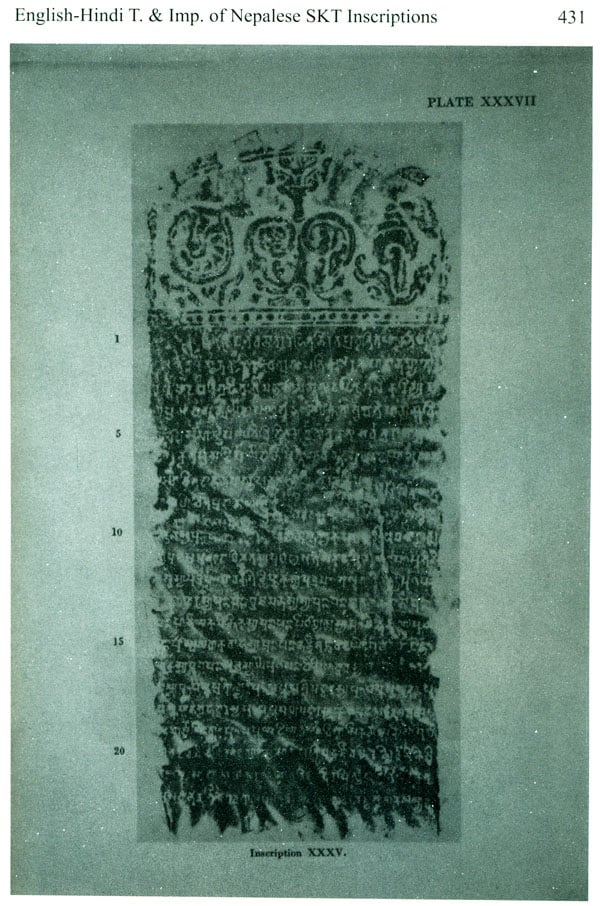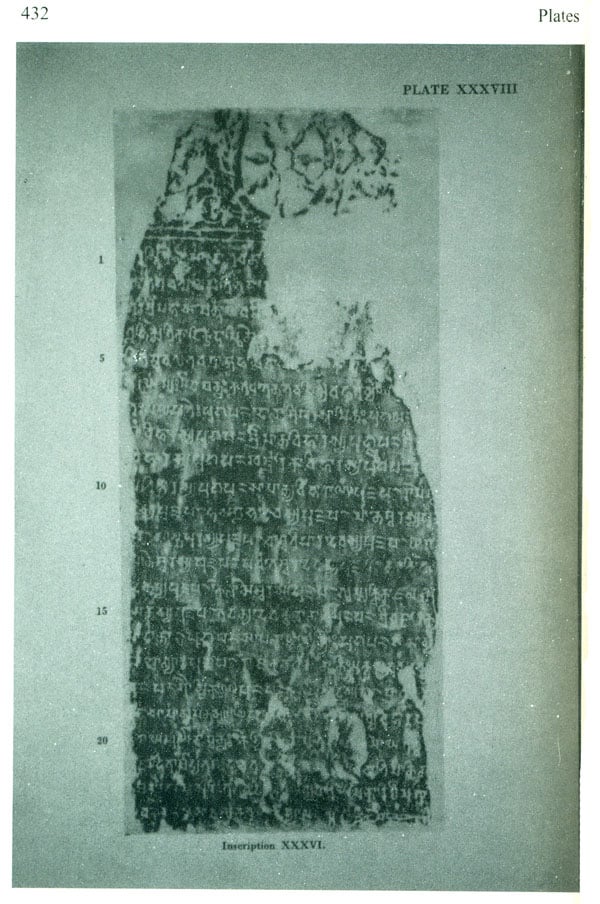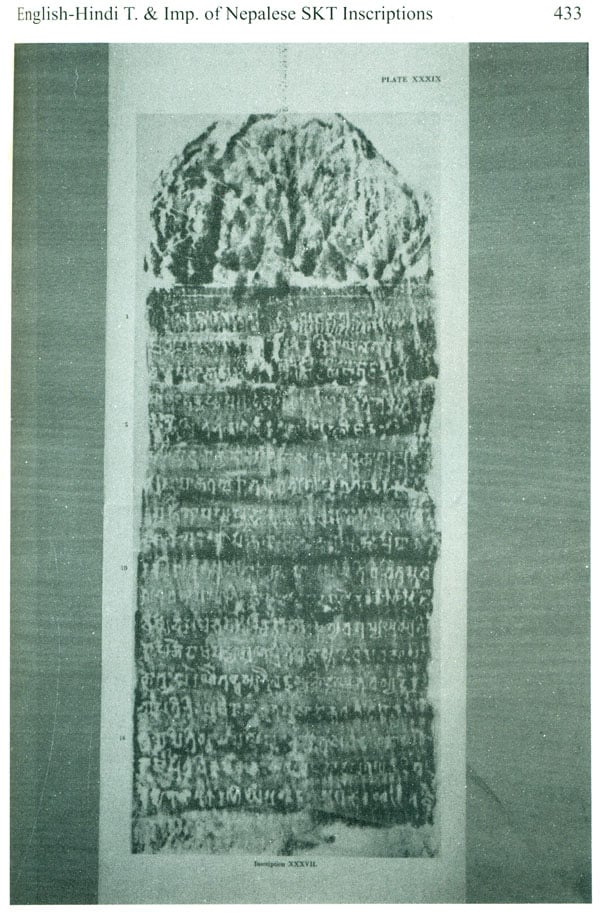
Importance of Nepalese Sanskrit Inscriptions (English-Hindi Translation)
Book Specification
| Item Code: | NAH321 |
| Author: | Krishan Dev Agrawal “Arvind” |
| Publisher: | Rashtriya Sanskrit Sansthan, Janakpuri |
| Language: | Sanskrit Text with English and Hindi Translation |
| Edition: | 2010 |
| ISBN: | 9788186111376 |
| Pages: | 502 |
| Cover: | Hardcover |
| Other Details | 8.5 inch x 5.5 inch |
| Weight | 810 gm |
Book Description
Preface
Epigraphy especially the inscriptional literature has remained as one of the most authentic sources for unraveling the past and providing glimpses into unknown facets of the history of any country with ancient civilization. Asian countries offer a vast heritage of inscriptional records. For more than a millennium, Sanskrit functioned a potential medium for official documents, records of royal dynasties and above all, the inscriptions; in many of the countries in Asia and South East Asia. Sanskrit Inscriptions have remained invariable sources for updating and re-writing of History, as well as for understanding Culture, not only in case of India, but in case of many of the countries in Asia as well.
Thousands of Sanskrit Inscriptions are available from South East Asian countries like Cambodia, Jawa and Bali (Indonesia), Champa (Vietnam), Burma and Thailand. It is true that Sanskrit has led to the formulation of the cultural mosaic of these countries, at the same time; it is also true that these countries have made valuable contribution to Sanskrit literature through these inscriptions. Sheldon Pollock has rightly pointed out the ‘process of rise of Sanskrit cosmopolitan culture’ in these countries through which a primordial globalization’ could be accomplished. It was the aesthetics and a perfect grammatical structure of Sanskrit language that led to cross cultural relationships.
Brilliant studies by scholars like H.B. Sarkar, R.C.Majumdar, D.C. Sarkar, F.D.K. Bosch, George Coede’s, Chirapat Prapanfavidya and others have been made on Sanskrit inscriptions of South East Asian countries. However, Sanskrit inscriptions from Nepal have not received adequate attention. R. Gnoli, a well known Italian scholar of Indology and Oriental Studies had done pioneer work by collecting publishing as many as 89 Sanskrit inscriptions from Nepal in Roman script. Unfortunately, Gnoli’s work has not been easily accessible for scholars and researchers. In the present volume, Shri Krishan Dev Agrawal has not only produced Devnagari transcriptions of all the 89 inscriptions collected by Gnoli, he has given a faithful and authentic translations in Hindi and English also of all these inscriptions.
These inscriptions bring out the common cultural heritage that India and Nepal have shared during the course of History that has run through the past three millenniums. They also provide missing links of the chain of relations between India and Nepal. Rhetorical. celebrations and panegyric exaggerations generally go hand in hand with historicity in all inscriptional literature. The inscriptions from Nepal are no exceptions. We find specimen of ornate Sanskrit prose in some of these inscriptions, while some others exhibit rare accomplishments in poetic excellence. Above all, these inscriptions provide glimpses of ideology, culture and concern for values that sustain a nation. While many of them commemorate some event connected with religious activity, such as establishment of a pillar, a temple or donation etc., there are inscriptions here recording prohibitions and injunctions from Kings for social order. Some of the inscription provide valuable information about trade, commerce, taxation and even tax -exemptions (see 30th to 32nd; 37th; 54th and 55th). Some of the prohibitions ordered by the royalty through these inscriptions evince the concern for ecology and preservation of flora and fauna of Nepal (for example no. 28th here). Social welfare is also highlighted through these by recording activities like digging of wells, construction of canals and ponds (see 48th, 63rd and 89th here). Rich topology of rural and urban life in Nepal during the first millennium is also evinced through these inscriptions.
Rashtriya Sanskrit Sansthan is thankful to Shri Krishan Dev Agrawal for having given us an opportunity to bring out this important treatise. This volume will hopefully revive interest into the transcontinental aspects of Sanskrit studies.
Introduction
This book is based on a book named ‘Nepalese Inscriptions in Gupta Character-I’ in Roman script written by R. Gnoli. I have translated these 89 Nepalese SKT Inscriptions ( with plates) full of grandeur-celebrity of Superb Kings of Lichhavi Dynasty of Nepal, in English and Hindi which are presented to the readers. Because of being fragmented inscriptions, grammatical errors hither and thither, inclusion of some words from dialects of Tibetan and hilly regions beyond the Sanskrit, the English translation can never be said as accurate and exact literally and absolutely, but keeping all these things in mind, I have endeavoured to my best to translate into English and Hindi appropriately. I hope that the students of Epigraphical and historical subjects shall be gained and helped by this translation to assimilate and imbibe the knowledge about the subject and mutual relations of Bharat and Nepal between the period of 463 AD and 747
AD. At last, I am very proud of Professor Dr. Radhavallabh Tripathi, the V.C. and Dr. G.R. Mishra, the D.R. of Rastriya Sanskrit Sansthan, Delhi who realized the importance of this book and consented it to be published.
